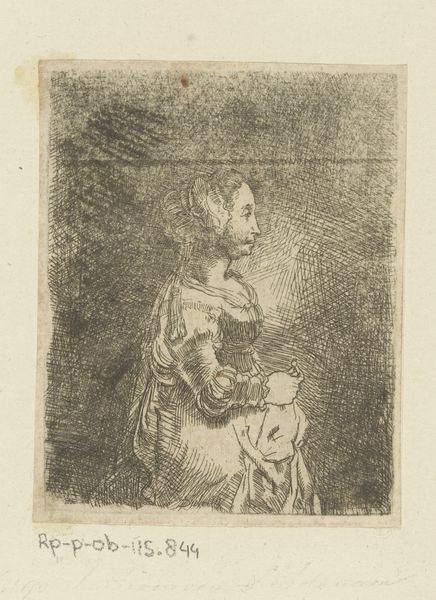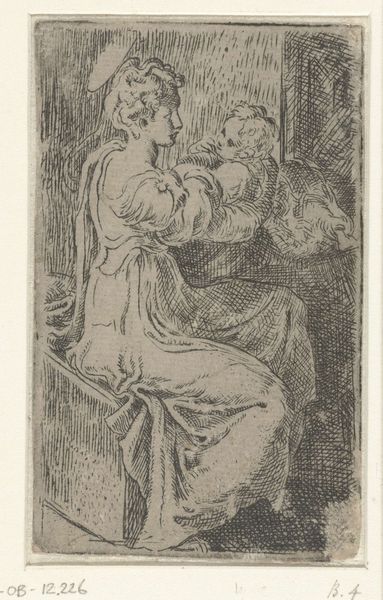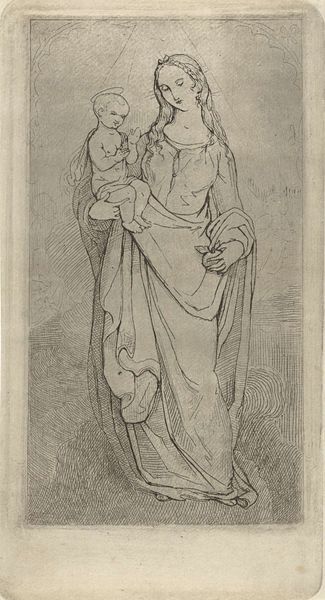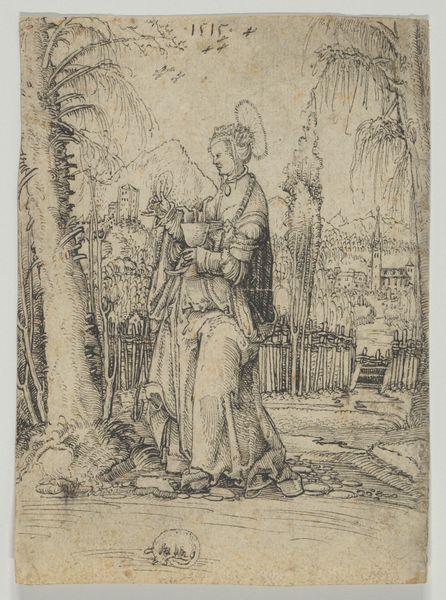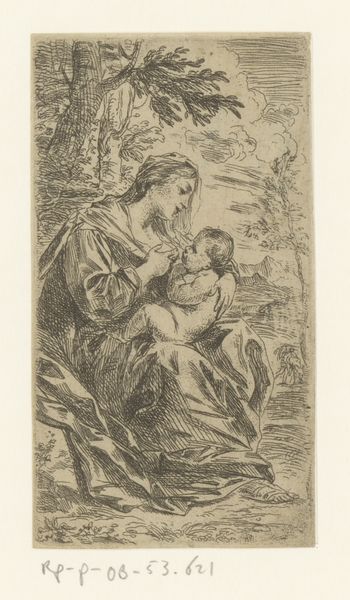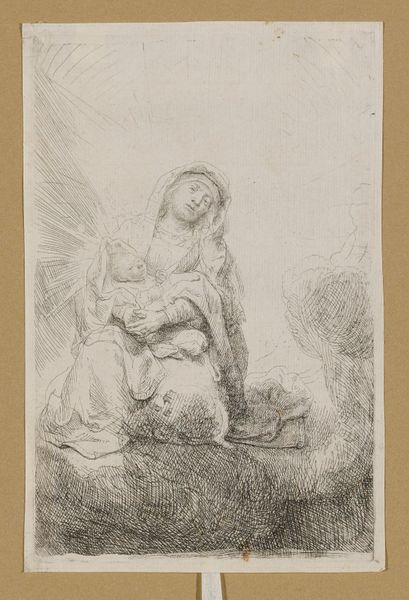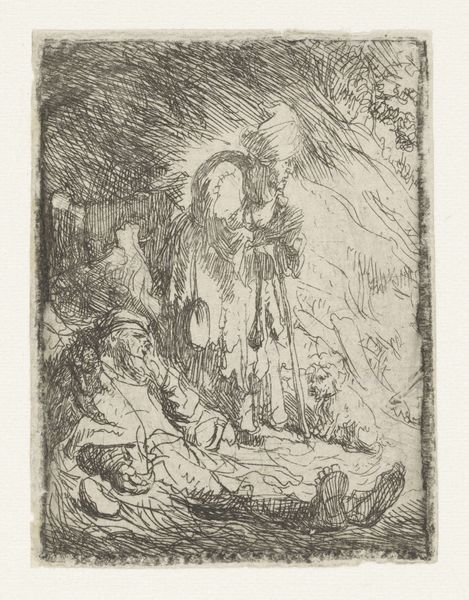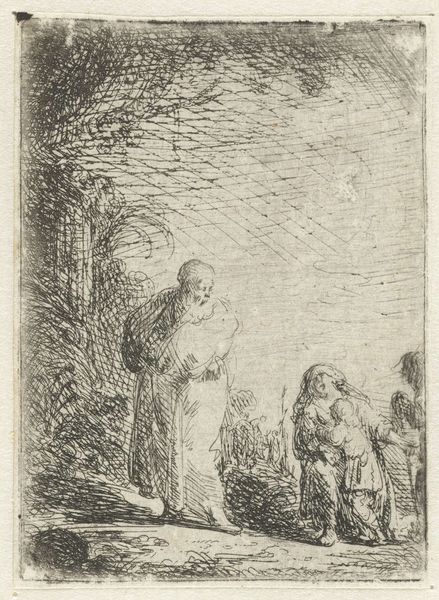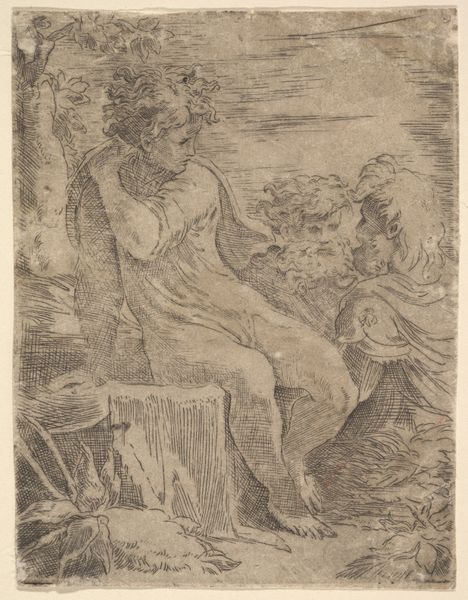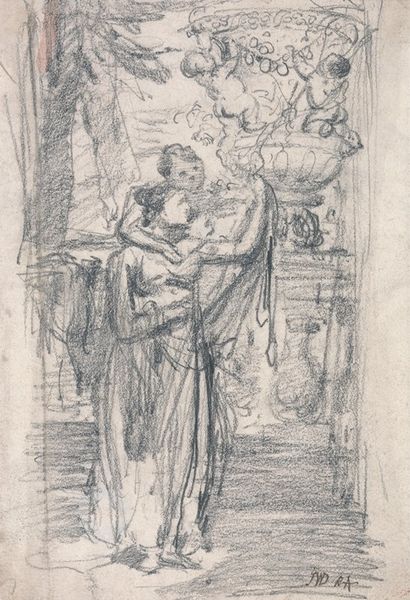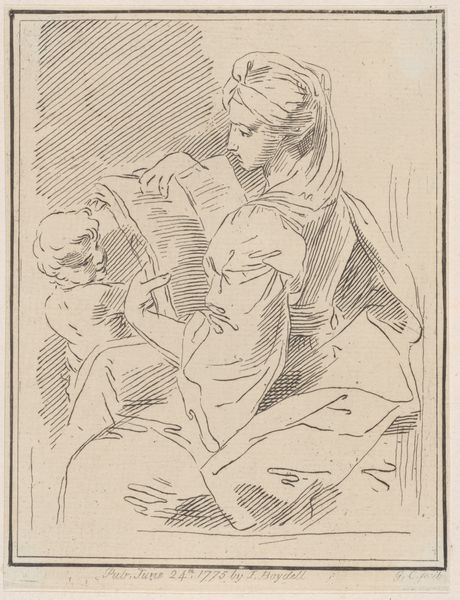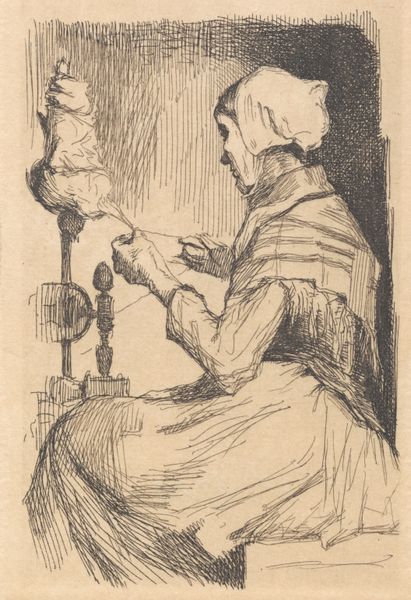
drawing, paper, ink
#
portrait
#
drawing
#
narrative-art
#
baroque
#
figuration
#
paper
#
ink
#
genre-painting
Dimensions: height 59 mm, width 36 mm
Copyright: Rijks Museum: Open Domain
Editor: Here we have "Standing Peasant Woman," a drawing made with ink on paper by Jan Lievens between 1625 and 1674. I’m struck by how Lievens depicts this woman with a certain groundedness, despite the relative looseness of the drawing. How do you read this image? Curator: It's a fascinating piece! Look at how Lievens situates her. The etching medium and subject position it within a historical narrative. Think about the representation of rural women during this period in the Netherlands. Often, these images, particularly in genre painting, are loaded with assumptions about class and labor. What do you notice about her gaze and posture? Editor: Well, she's looking off to the side, away from us. She seems deep in thought. Curator: Exactly! Lievens doesn't romanticize her; nor does he fall into caricature. Consider how the artwork engages with issues of labor and social standing during the Dutch Golden Age. How does it intersect with prevailing stereotypes? The presence of water or milk can signify life-sustaining nourishment. What socioeconomic factors were at play in the seventeenth century for peasant women, especially regarding sustainability? Editor: I hadn't considered the context of Dutch society at that time, and how this might be either reinforcing or subverting stereotypes about labor, class, and the female body. Curator: The power dynamics are subtle, yet crucial to dissecting the work. We must explore not only the artistry, but the potential social commentary embedded within it. It also pushes us to investigate questions of the social construction of femininity within art-historical traditions. What has struck you the most regarding art history? Editor: It gives me a greater sense of the historical framework of this image, prompting reflections on its cultural representation in art history. Curator: Exactly. Art is never created in a vacuum; historical and social realities greatly influence it. This peasant woman's portrait shows we can glean knowledge of both her life and that of her contemporaries by interpreting her representation and understanding how artistic intent shapes visual outcomes.
Comments
No comments
Be the first to comment and join the conversation on the ultimate creative platform.
